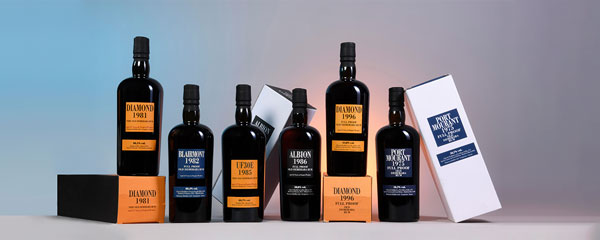Cuvée presentation
A Longrow single cask distilled in 2002, matured in a sherry cask and bottled in 2018. Cadenhead's was founded in Aberdeen in 1842 by George Duncan. William Cadenhead then joined the company and, when George Duncan died in 1858, took over and renamed the business after himself. William’’s nephew Roberth Duthie developed the company in the early 20th century and it remained a family business until 1969. William Cadenhead Ltd was then sold to the Springbank distillery’’s owner J. & A. Mitchell and Co. Hedley G. Wright, a direct descendent of Archibald and John Mitchell, became William Cadenhead Ltd’’s CEO. In the past, Cadenhead had mainly sold its own brands, such as Putachieside, The Hielanman, Seven Stars and Green Label rums. Under Hedley G. Wright, the company began to take more of an interest in single malts. This led to the creation of the legendary collection of dumpy bottles in 1977. This series of single malts stood out for its very gentle filtration, lack of artificial colouring, and relatively high bottling strength for the time (80 proof/45.7% ABV). The labels included lots of information, including the month and year of distillation and bottling, and whether or not sherry casks were used. Also in 1977, the business moved to another address in Aberdeen, and finally to Campbeltown. In the 1980s, Cadenhead sold casks to legendary bottlers such as Samaroli and Corti Brothers through the subsidiary Duthie’’s. Finally, two new whisky ranges were created in 1991 and 1992, the Original Collection bottled at 46% and the Authentic Collection bottled at cask strength. Other special series to mark Cadenhead’’s major anniversaries (150 and 175 years), as well as new ranges launched since (Small Batch, World Whiskies, etc.), have all contributed to the company’’s ongoing history up to the present day. A limited edition of 276 bottles.
The distillery Longrow(Springbank)
Scotland, Campbeltown – Mull of Kintyre. Original distillery closed. Owner: J&A Mitchell & Co Ltd.
Before becoming the second single malt distilled at Springbank, Longrow had its own distillery, the ruins of which can be found near Springbank's car park and bottling plant. Longrow was awarded a distillation license in 1824 but closed in 1896. In 1973, the Mitchells, descendants of a long dynasty of Campbeltown distillers, began distilling a heavily peated malt at Springbank (55 ppm). Longrow rose from its ashes and became Springbank's peated alter ego. Its production, however, was sporadic. No trace remains from the period 1975-1986. Records begin again in 1987 with a handful of bottlings for independent bottlers such as Signatory Vintage. During the same period, its owners bottled the first two years of the distillery's distillation, 1973 and 1974. These editions became an immediate hit among collectors and fans of peated whiskies.
Report a problem with this lot ? Report





